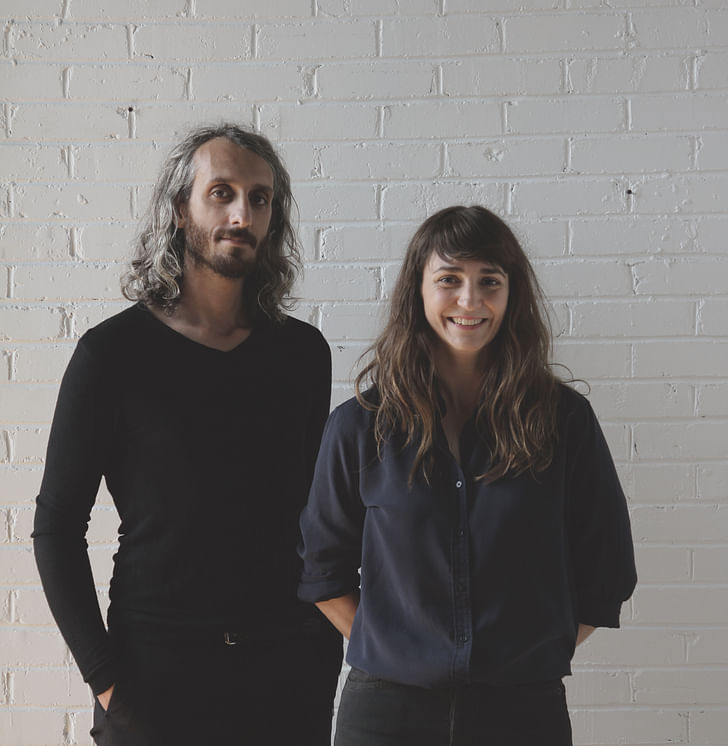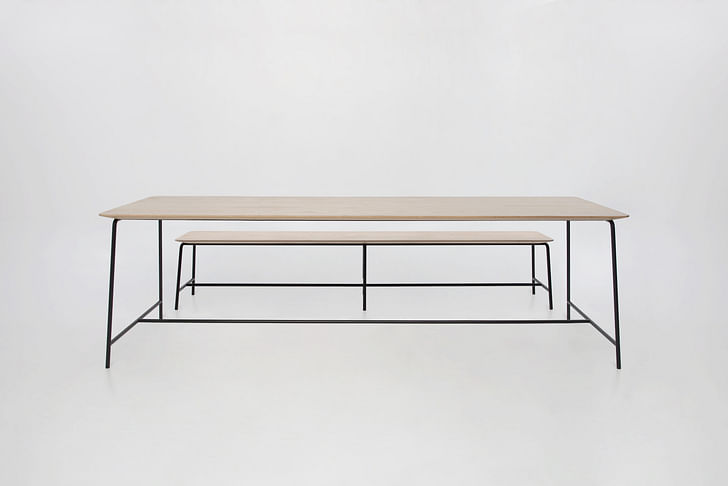

The Quebecois studio Atelier Barda, founded by Cécile Combelle and Antonio Di Bacco, was recently named among Azure's 30 leading Canadian architectural firms. The young practice originally set up shop in Paris before launching a satellite office in Montreal, where they now reside.
For this week's Small Studio Snapshot, we talk with the multidisciplinary firm about the difference between the two countries, their new furniture line, and the "French touch" they bring to their designs.
How many people are in your practice?
The team currently has 6 employees, including the two co-founders, Cécile Combelle and Antonio Di Bacco, both architects.
Why were you originally motivated to start your own practice?
It was something we had already thought about during our studies at the School of Architecture of Toulouse. Just after graduating from Toulouse in France, we worked for offices in Paris. During our free
time, we participated in several architectural competitions, grants and installations. We had won several awards and prizes that encouraged us to continue our personal practice. Subsequently, we settled in
Montreal, Quebec, and chose to formally establish our practice while maintaining links with France.
What hurdles have you come across?
By moving to a predominantly francophone city in Canada, we encountered important cultural differences, whether in the practice of architecture or in relation to the vision of the practice itself. The perception of architecture, its role and its value are not experienced and expressed in the same way from one country to another. What is certain is that we work really hard to convince our clients to push creative boundaries and deviate from local architectural paradigms.
What are some of cultural and professional differences in terms of architecture between France and Quebec?
Having launched our firm in Montreal without having studied or worked in Quebec, we really started from scratch. While Antonio was earning his diploma equivalency, he had to simultaneously establish and grow a professional network in order to meet potential clients. In general, access to public mandates and contracts here are much more restrained than in France, especially for young practitioners. Open competitions are rare. It was therefore a matter of quickly trying to find potential clients who would be willing to confide in us. We were fortunate enough to have found them.
In terms of practice, the education that we had received in France and Rome largely influences our architectural language. The majority of our references are from Europe. We had not realized this specificity upon our arrival. We conceived projects the way we would normally do back in Europe, and it was rather through discussions with our clients that made us aware of our “French touch”—whether in formal language, choice of materials, architectural details, etc.
Additionally, construction methods in Canada are much different than in France. We had to familiarize ourselves with standards of wood-frame construction, as opposed to the concrete structures we were used to. The climatic conditions of Quebec also foster major design restraints and have to be taken highly into consideration during the early stages of design, knowing that they could lead to complex details.

Is scaling up a goal or would you like to maintain the size of your practice?
Above all, the objective is to continue to carry out stimulating projects and to favor a qualitative approach to our productions. “Scaling up” is a possibility if our ideals are not compromised.
What are the benefits of having your own practice? And staying small?
Running an office is a permanent challenge. Each project brings a unique story that reflects both our sensitivity and the needs of our clients. In parallel, we have the opportunity to expand into other design
fields related to architecture. An example of this is the development of our own collections of furniture. We had recently launched a new branch of our practice, Foraine, dedicated to custom furniture and small objects.
Being a small team contributes to constant exchanges between the team. Our goal is, ultimately, to maintain a stimulating work environment where each member of the team is free to propose solutions to projects as much as to the development of the studio. In parallel, we are continually in the process of developing tools to grow in the most organized way possible.
No Comments
Block this user
Are you sure you want to block this user and hide all related comments throughout the site?
Archinect
This is your first comment on Archinect. Your comment will be visible once approved.